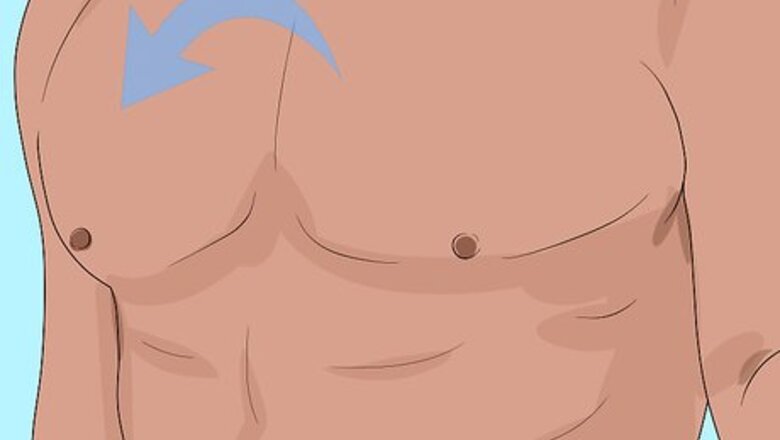
views
X
Research source
To apply a Fentanyl patch, start by preparing the area you are going to place the patch on. Then, put the patch on the area, just like you would stick on an adhesive bandage. Make sure to dispose of the patch properly so it is not a health risk to those around you.
Identifying and Cleaning an Appropriate Area
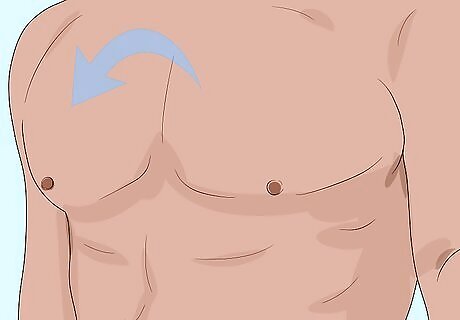
Pick a spot that is free of hair so the patch sticks better. A spot on your upper arm, your back, lower abdomen (belly), or your thighs are all ideal. Do not use an area close to your mouth, eyes, or nose, even if it has little to no hair, as this can put you at risk of ingesting or absorbing the medication too quickly. You should rotate what sites you use.
Make sure the area has no cuts, scratches, or irritation. Your skin should be free of any abrasions and not be too oily, as you do not want the medication to absorb too quickly into your body or to fall off.

If you sweat a lot normally, use medical tape along the patch edges to secure the patch to your skin. If a patch becomes loose, just tape it down. If the patch falls on the ground, you should put on a new patch as soon as you can.
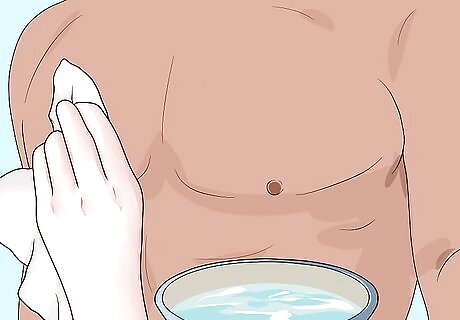
Clean the area with water and pat it dry. Use cold running water to clean the area or wipe it with a clean wet cloth. Then, pat it dry with a clean cloth or gauze. The area will need to be dry and cool so the patch can stick to your skin. Do not use any soaps or cleansers on the area, as they can react with the medication.
Putting on the Patch

Protect your hands from absorbing any of the medication by putting on medical gloves. Keep in mind you will still need to wash your hands well after applying the patch even if you are wearing medical gloves to ensure you are not exposed to the medication.
Open the package with scissors. Fentanyl patches will come in sealed packages that must be opened with scissors. Cut the package open, making sure you do not to cut or tear the patch inside. You can tear the top of the package and lift the patch out.
Each patch has a front and back covering of loose plastic. Remove both. Note that these are not the liner (the liner, split through the center, sits right on the patch).
Never put on patches that have been cut or torn, as this can put you at risk of an overdose. You will need to apply the patch once the package has been opened. Do not open a package unless you are going to use it right away.
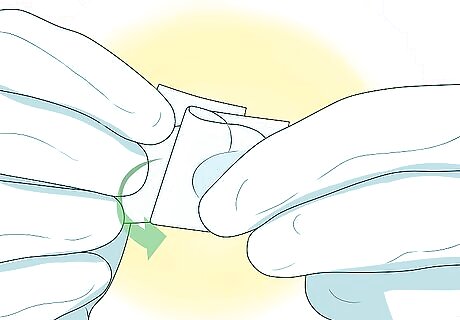
Hold the patch on the non-adhesive side and peel off the liner. Grip the patch between your fingers on the non-adhesive side and carefully peel off the liner on the sticky side. The liner should have 2 parts so you can hold the non-adhesive side and peel off 1 half easily.
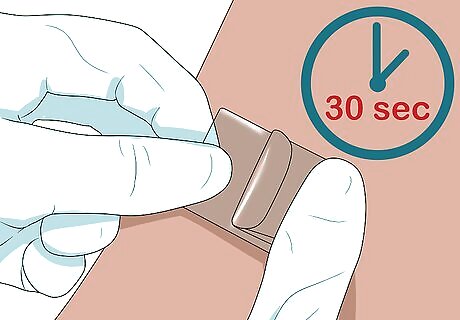
Press the patch onto the skin, holding for at least 30 seconds. Use your hand to press the patch onto the skin firmly, just like you would an adhesive bandage. Remove the second half of the liner as you press on the patch so it can sit flat on the skin. Then, press the patch with the palm of your hand so it stays in place. Make sure the adhesive side is attached to the skin, especially around the edges of the patch.

If required, put on a second patch away from the first patch. If your healthcare provider recommends that you use more than 1 Fentanyl patch at a time, always apply the second patch on a different spot on your body, preferably on the side opposite of where the first one is. Make sure the patches do not overlap or touch, as this can put you at risk of an overdose. It is rare that your healthcare provider would prescribe more than 1 Fentanyl patch at a time, as the medication is very strong and may not be safe in large doses. Only apply more than 1 patch at a time under your healthcare provider’s recommendations.
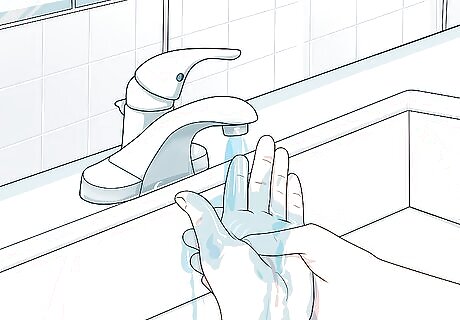
Wash your hands with just water after applying the patch. Clean your hands with cold water, even if you wore gloves. Do not use any soaps or cleansers, as this can interact with any medication on your hands.
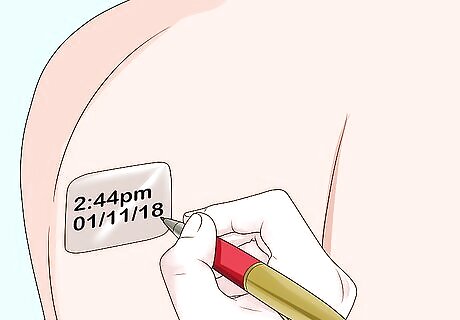
Write down the time and date you applied the patch. It’s easy to forget when you put the patch on, but it’s important that you don’t leave it on for more than 3 days. Therefore, write the date and time down right after you apply a new patch You can write directly on the patch using a felt-tipped marker/ pen or Sharpie(TM), or record the information in a notebook.
Caring for the Patch
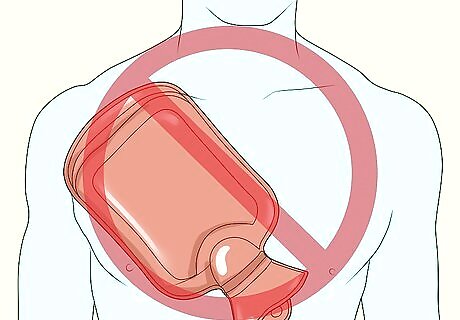
Do not expose the patch to heat. Do not put heating pads, electric blankets, or hot compresses on the patch. You should also stay away from saunas, hot tubs, heated waterbed, or direct sunlight. Heat can cause your body to absorb the medication too quickly or in high amounts.

Wear loose clothing over the patch. Go for clothing in breathable fabrics like cotton or linen. Make sure you wear loose clothing when you workout or exercise, as you do not want your body, or the area with the patch, to become overheated.
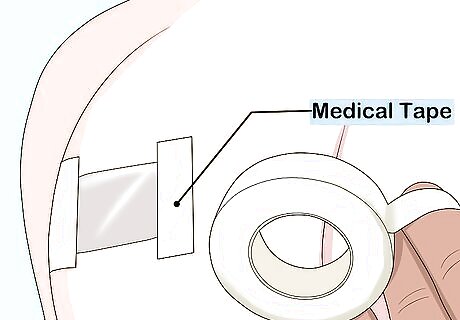
Secure the edges of the patch with medical tape if they start to peel off. Line the edges of the patch with medical tape so it stays on. Make sure you wash your hands with water after you have secured the patch. If the patch does not seem secure, properly remove it and replace it with a new patch. Don’t forget to note the new time and date on the patch or in a notebook.
Be careful if you must replace a patch. Overlapping doses of patches can cause a cumulative effect-- it can add to the dose. If you have dry mouth, dry eyes, you may have triggered an overdose. Get your doctor's advice and follow it.

Watch for signs of an overdose while wearing the patch. Notice if you have trouble breathing or have shallow breathing. You may feel very sleepy or fatigued and be unable to talk, walk, or think properly. You may also have feelings of dizziness, faintness, or confusion. If you display any of these symptoms, remove the patch immediately, administer Narcan and call 911 or contact your healthcare provider right away.
Removing the Patch
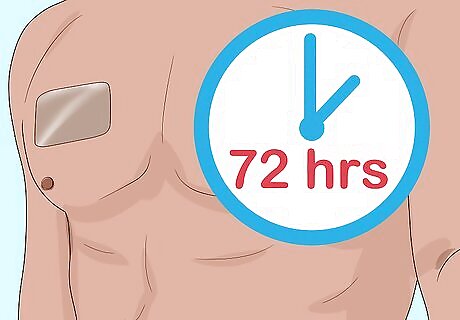
Keep the patch on for no longer than 72 hours (3 days). You may keep the patch on for a shorter amount of time if directed to do so by your healthcare provider. To keep track of how long you have worn the patch, write down the time and date you put on the patch in a safe place so you know when to take it off. Or, simply change your patch at around the same time of day.
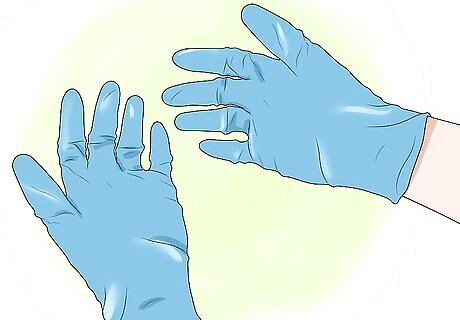
Put gloves on before removing the patch. Keep in mind you will still need to wash your hands after removing it, even though you are wearing gloves.
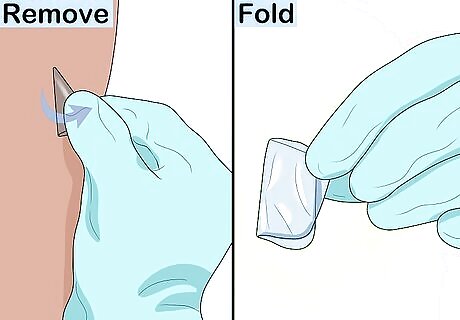
Remove the patch carefully and fold it together. Fold the patch together so the sticky sides meet. This will help to prevent exposing the medication to others. This is an important step if you have children or pets at home, as you do not want them to be exposed to the medication.

Dispose of the patch in a plastic bag right away. You should not flush the patch down the toilet; waste treatment plants do not get chemicals from medication out of treated water. You can seal the folded patch in a plastic bag and dispose of it in the garbage. Wash your hands with water after disposing of the patch.
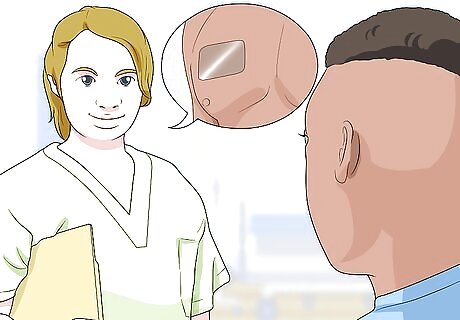
Put on a new patch only as you have been instructed to by your healthcare provider. Apply the new patch on a different place on your body, preferably a spot on the opposite side of where the old patch was. Only keep the new patch on for 3 days or less, or as instructed by your healthcare provider.



















Comments
0 comment